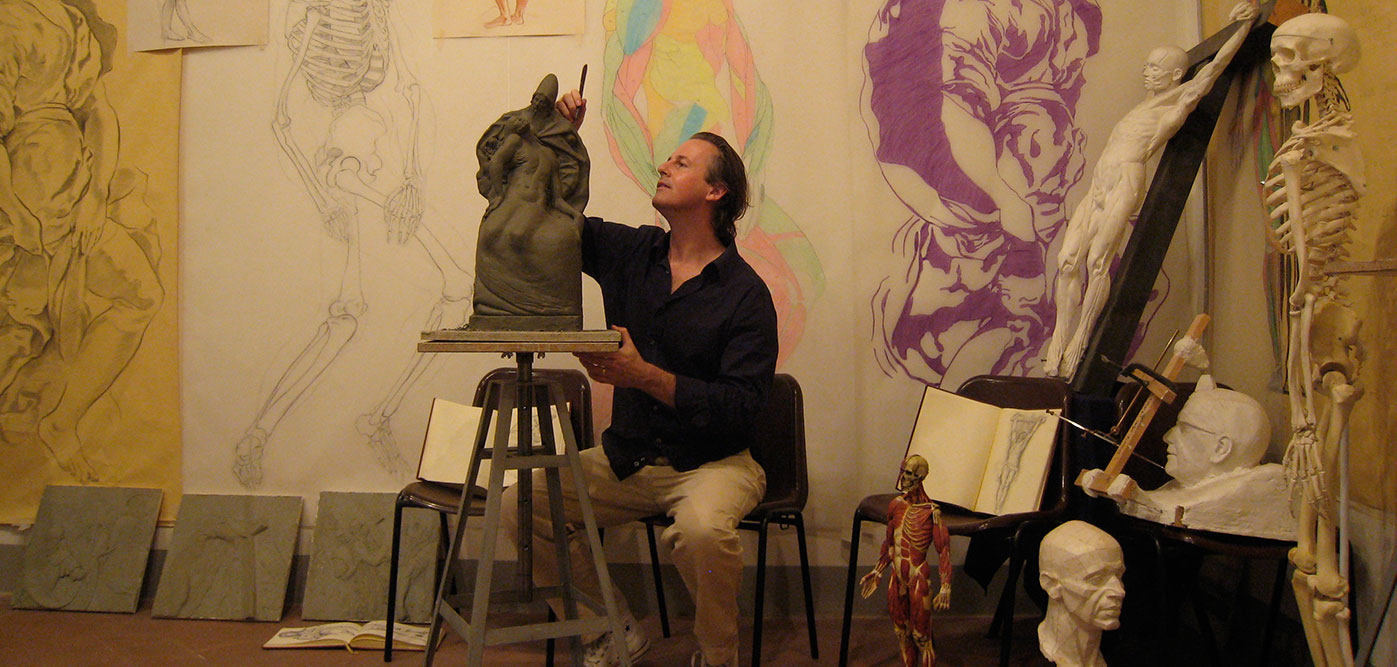The way I approach my work is very straight-forward. It usually starts with a request from a client to make sculpture or an altar piece or whatever it may be. Then I set about developing the ideas through sketches based on many sources of inspiration including drawing from life, churches, museums, books and even google images. I pull together all these sources and morph them into an original work of art as they gradually conform to the needs of the client and the inspiration of the artist.
An example of this process is the bronze altar piece I did for a church in Rome on this web page. The theme was “Pentecost” and the birth of the Church. I went to the primary source, the scriptural account and prayed deeply on its meaning with the aid of the writings and commentaries of the two thousand years of rich Christian tradition of the saints and scholars. I then went to the Holy Land and researched the original setting where the historic event took place and made drawings and took photographs of the different factual elements such as the architecture, clothing and vessels. Based on these primary foundations I started to research the history of art for the different interpretations of the same event by the great masters so as to extract from their visions what resonates with me as a contemporary artist striving to communicate with a contemporary audience.
Art must transcend as well as observe; its role is to bring spiritual vision to bear on reality.
I then attend Holy Mass with my assistants and pray before the piece for a half hour each morning before we start working on it. This is done so as to open our hearts and souls to the Holy Spirit so as to inspire us as to what to add or take away from the sculpture so as to nourish the spiritual life of the viewer in their contemplation of the composition. After the days labour is done, we then spend another half hour in prayer and contemplation before the piece so as to see if it feeds our interior lives and hence effective as liturgical art. This process is repeated every day until the work is completed satisfactorily with the aid of visits to our studio by clients, artists, theologians, and the general public, all of whom bring their own particular gifts and needs to the effective resolution of a successful art work in service to the spiritual and human needs of the public.
The same process was used for the painted altar piece for the chapel of HQ of the Knights of Malta in Dublin. Most of my work was in the composition and design through drawing where I convinced the client that a painting would be more appropriate for the setting than a sculpture. He insisted that I compose the work so as to guarantee the most effective liturgical impact. In order to do so I composed all the linear perspective in the compositions so as to lead the eye to the centre of the altar where the holy sacrifice of the Mass takes place and the Blessed Sacrament is to be reserved. This compositional device subconsciously reinforces the real presence of the Blessed Sacrament as the central protagonist in the narrative. I then used the Holy Spirit at the top of the central panel as the primary light source for all three compositions which also subconsciously reinforces His role in the events taking place. Once the composition was laid out in full scale drawings I then put it to canvas with the help of two very talented painters Robert Zeller and Adam Miller.
